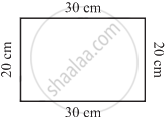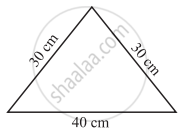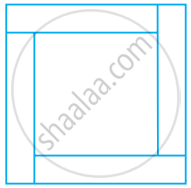Advertisements
Advertisements
Question
Find the perimeter of an isosceles triangle with each equal side = 13 cm and the third side = 10 cm.
Solution
Required perimeter = 13 cm + 13 cm + 10 cm = 36 cm
APPEARS IN
RELATED QUESTIONS
Each side of a rectangle is doubled. Find the ratio between :
(i) perimeters of the original rectangle and the resulting rectangle.
(ii) areas of the original rectangle and the resulting rectangle.
A path of uniform width, 2.5 m, runs around the inside of a rectangular field 30 m by 27 m. Find the area of the path.
Find the perimeter of a rectangle whose:
length = 40 cm and breadth = 35 cm
Mohit makes 8 full rounds of a rectangular field with length = 120 m and breadth = 75 m.
John makes 10 full rounds of a square field with each side 100 in. Find who covers larger distance and by how much?
A regular pentagon of each side 12 cm has same perimeter as that of a regular hexagon. Find the length of each side of the hexagon.
If the length of a rectangle is 14 m and its breadth is 10 m, what is its perimeter?
Length and breadth of a rectangular sheet of paper are 20 cm and 10 cm, respectively. A rectangular piece is cut from the sheet as shown in figure. Which of the following statements is correct for the remaining sheet?
What is the perimeter of the following figures? What do you infer from the answers?
 (a) |
 (c) |
 (b) |
 (d) |
On a centimetre squared paper, make as many rectangles as you can, such that the area of the rectangle is 16 sq cm (consider only natural number lengths).
- Which rectangle has the greatest perimeter?
- Which rectangle has the least perimeter?
- If you take a rectangle of an area of 24 sq cm, what will be your answers?
A large square is made by arranging a small square surrounded by four congruent rectangles as shown in the given figure. If the perimeter of each of the rectangle is 16 cm, find the area of the large square.

